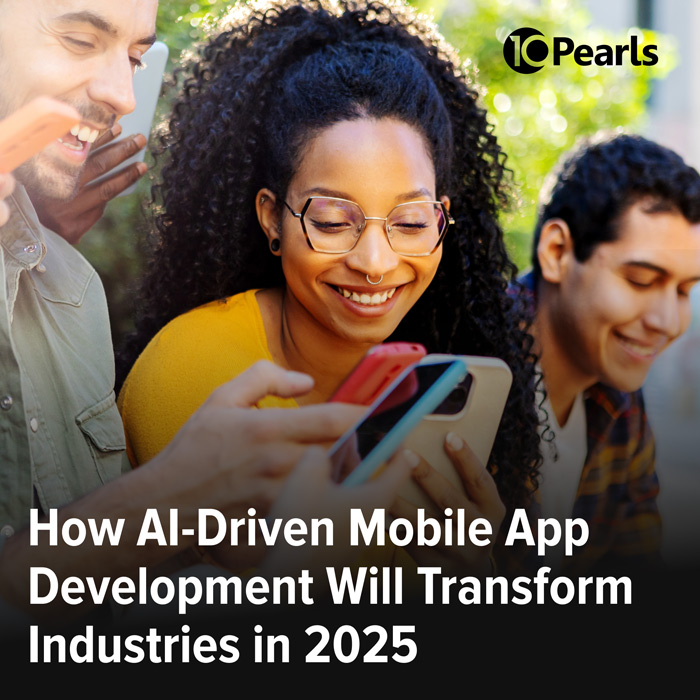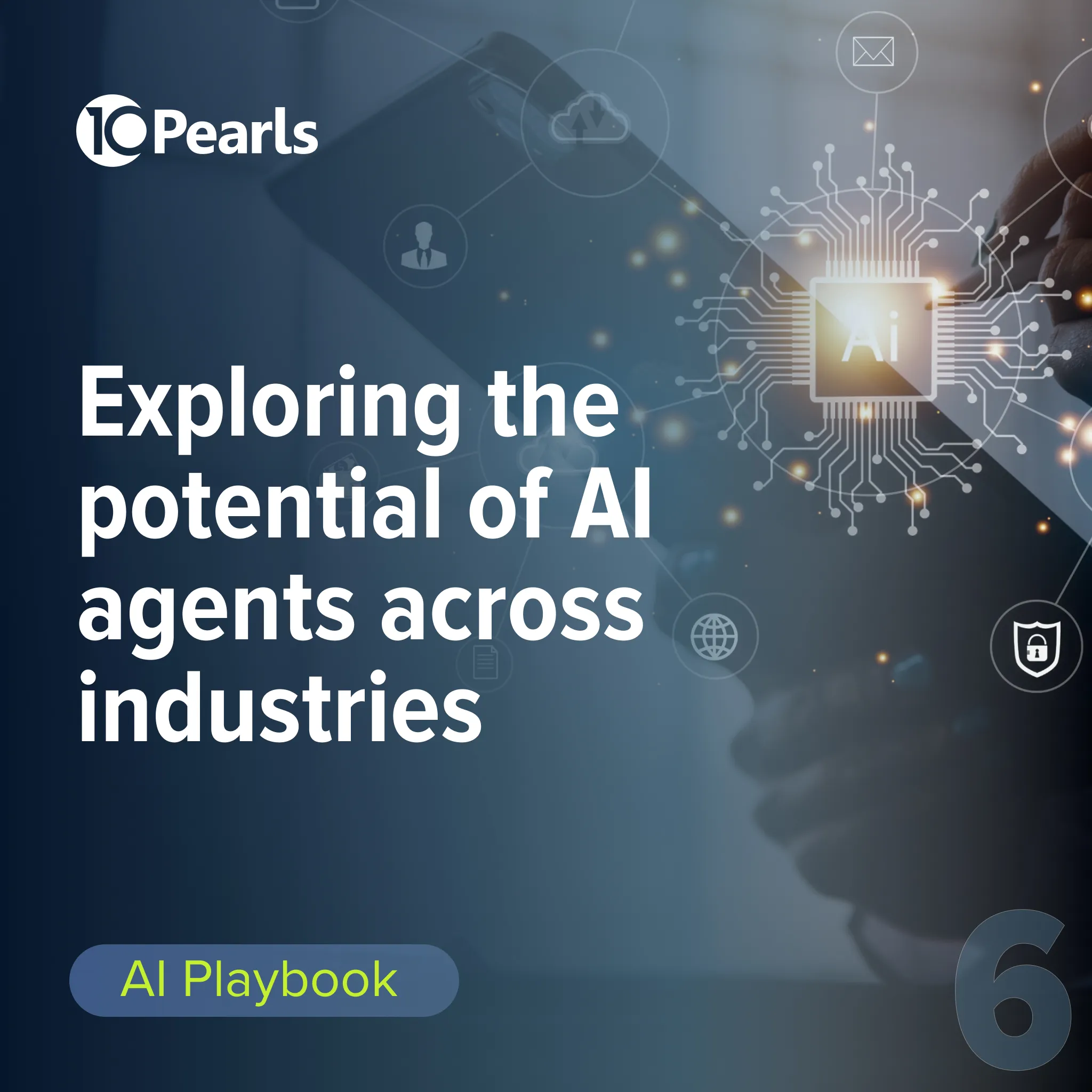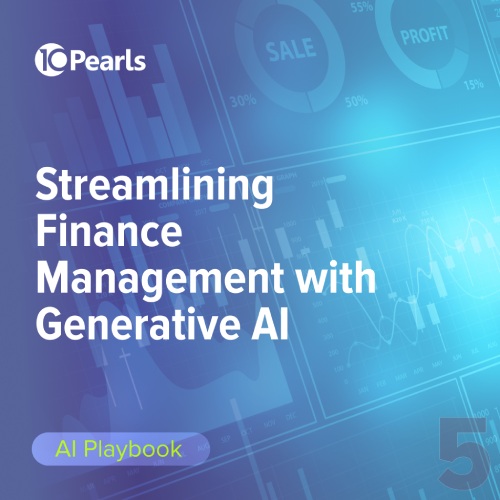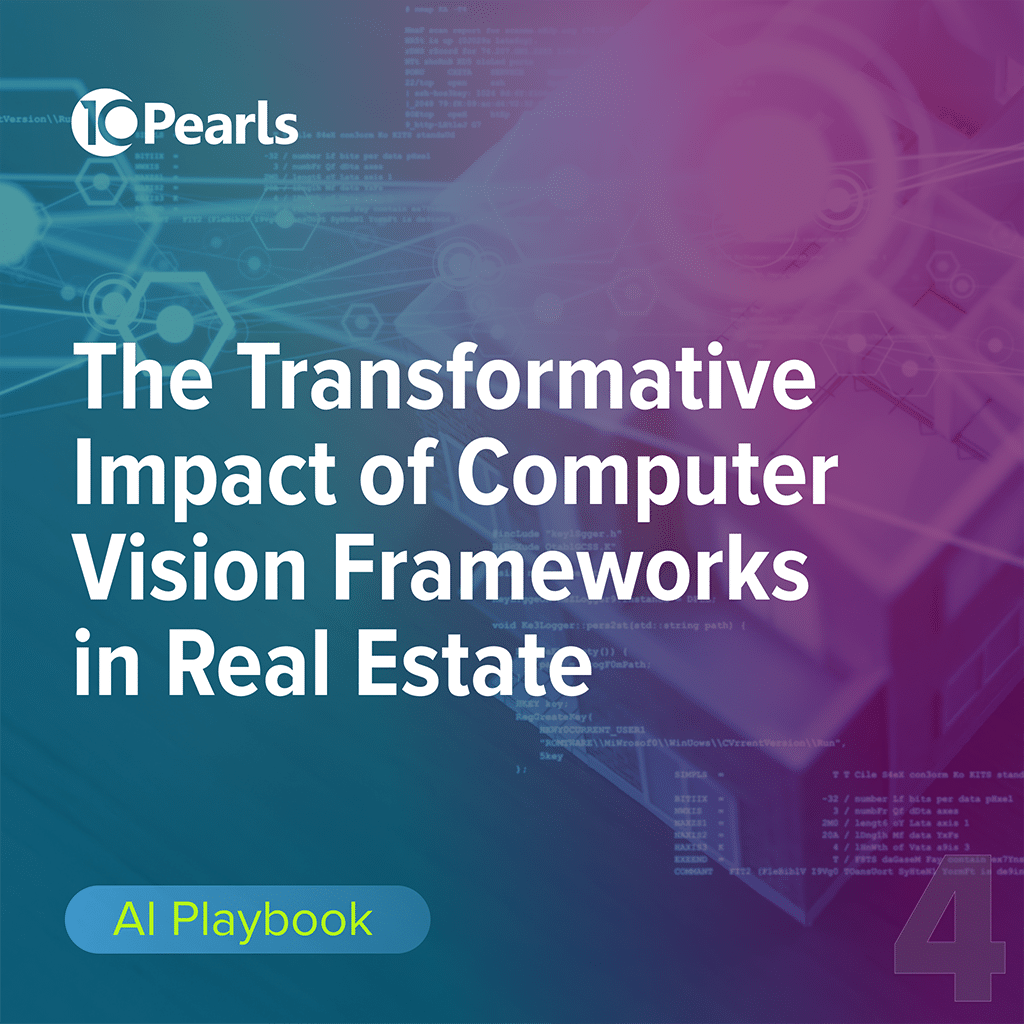

By 10Pearls editorial team
A global team of technologists, strategists, and creatives dedicated to delivering the forefront of innovation. Stay informed with our latest updates and trends in advanced technology, healthcare, fintech, and beyond. Discover insightful perspectives that shape the future of industries worldwide.
The Shift Toward AI-First Architecture in Enterprise Tech
With the growing adoption of artificial intelligence (AI), more and more businesses are finding ways to integrate this pivotal technology into their core applications and products in order to stay competitive in an AI-driven market.
While companies continue to integrate AI and machine learning (ML) technology into their existing systems, a growing number of business leaders are adopting a new approach to software development, one that avoids the restrictions of adding AI post-build – AI-first architecture.
What is AI-first architecture?
AI-first architecture (AFA) is a software development strategy where AI is at the core of the system’s design, instead of being treated as an add-on or secondary feature. This approach ensures that AI-driven capabilities, such as automation, data-driven decision-making, personalization, and adaptive learning, are foundational to the application or product. This approach is also described as AI-first software development, AI-first application development, or AI-first design.
Why it matters
AFA development represents a fundamental shift in how businesses design and develop AI-powered solutions. While AI is still in its early stages, companies across all industries have recognized its transformative value and are racing to embed it into their key products.
Leading companies that have integrated generative AI with their end-to-end process redesign have seen up to 25% cost savings.
While this approach can deliver short-term gains, it can also lead to a system with limited scalability, adaptability, and efficiency, if not built correctly. AFAs overcome these challenges by ensuring that AI is deeply embedded from the start, allowing for faster data processing, model training, and more seamless automation.

How is AI-first architecture different from SOA?
Compared to software design strategies like service-oriented architecture (SOA), AFA differs by embedding AI-driven decision-making into the core of the system instead of using predefined rules and modular services for integration.
SOA focuses on creating greater interoperability and flexibility by structuring systems as a collection of modular services, allowing businesses to integrate diverse applications, streamline workflows, and execute system updates without having to overhaul the entire system.
Key differences between AI-first architecture & service-oriented architecture
| AI-first architecture | Service-oriented architecture | |
| Core focus | AI and ML treated as foundational components, enhancing adaptability & autonomy | Modular, reusable services designed for enterprise system integration and interoperability |
| Data handling | Data-centric approach, leveraging vast datasets for continuous AI training and optimization | Service-driven approach, facilitating structured data exchange between applications |
| Decision-making | AI models autonomously analyze data and make predictive decisions | Services follow predefined logic, executing business rules defined by human developers |
| Computational needs | Requires high-performance computing (HPC) and GPUs for ML model training and inference | Standardized processing for service execution, typically optimized for transactional workloads |
| Deployment | Cloud-native, designed for distributed AI inference, real-time processing, and edge AI capabilities | Can be deployed on-premises, in hybrid environments, or on the cloud, often relying on centralized service orchestration |
| Scalability | AI models continuously adapt and retrain based on new data, enhancing system intelligence over time | Services scale horizontally but require governance frameworks for effective orchestration and management |
Benefits of AI-first architecture development
AFA is reimagining how systems process, learn, and evolve. They ensure AI-driven capabilities, such as natural language processing (NLP), computer vision, predictive analytics, and automation are not just bolted on but structurally embedded into the system’s core workflow. This approach brings several advantages for businesses looking to develop an AI solution.
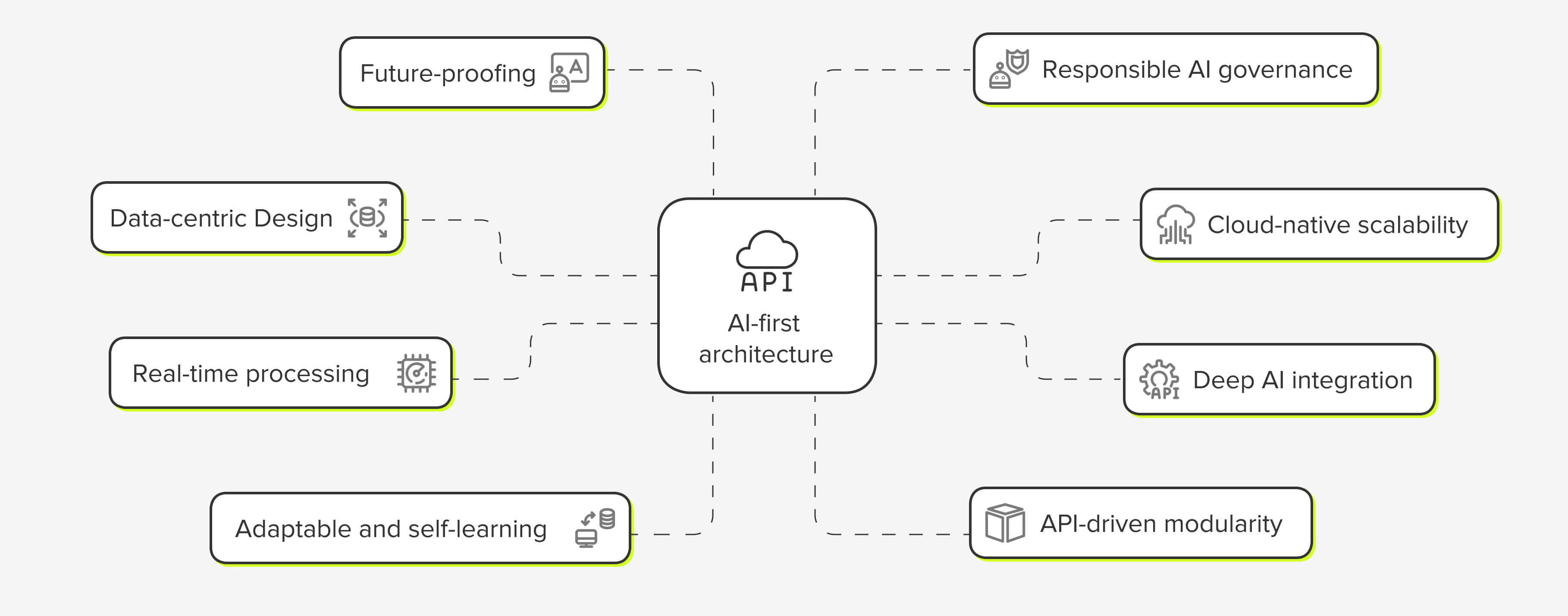
Data-centric design
AI-first systems prioritize data collection, processing, and governance, ensuring machine learning models are continuously fueled with high-quality data. This structured approach allows for real-time analytics, predictive insights, and adaptive decision-making without manual intervention.
Cloud-native and scalable
AI-first platforms leverage cloud computing and distributed systems to enable seamless scalability, high availability, and optimized resource allocation. These systems dynamically adjust processing power, making them more efficient as they scale. Additionally, by supporting more efficient coding practices, AFAs can help reduce energy consumption by up to 50%.
Deep AI integration
Rather than being an external add-on, AI models are embedded directly into workflows, enabling:
- Automation of processes through AI-powered decision engines
- Personalization at scale, adapting to user behaviors in real-time
- Continuous learning and self-improvement, reducing the need for manual updates
Real-time processing
AI-first systems are built for real-time data streaming and inference, supporting applications such as IoT, fraud detection, and autonomous systems. This allows for immediate responses to changing conditions, improving efficiency and accuracy in mission-critical environments.
Adaptable and self-learning
AFAs incorporate machine learning pipelines that allow systems to self-optimize over time. Unlike traditional software that requires manual updates, AI-driven platforms can learn from new data, self-correct, and dynamically evolve in response to business needs and market shifts.
API-driven and modular
By exposing AI functionalities via APIs and microservices, AI-first systems remain highly flexible and can integrate with external applications effortlessly. This modularity ensures businesses can incorporate new AI advancements without disrupting core infrastructure.
Future-proofed against disruption
Organizations that embrace AFA today will be better positioned to integrate emerging AI technologies—such as generative AI, autonomous agents, and self-optimizing workflows—without major system overhauls. This makes AI-first development a strategic investment for long-term innovation.
Responsible AI and governance for ethical AI deployment
AFA embeds fairness, transparency, explainability, and compliance into AI models, ensuring organizations meet regulatory and ethical standards while reducing risks associated with biased or opaque AI decision-making.
When to choose AI-first architecture for software development
Deciding on the right strategy for your software development project requires weighing critical factors like time, resources, team expertise, and budget. To help you understand, here’s a quick summary of how to know when each approach is the best fit.
Choose AFA when:
- Data-driven decision-making is a core need
- Scalability and adaptability are critical
- Competitive differentiation relies on performance of AI features
Choose SOA when:
- Integration and interoperability are critical
- Regulatory and compliance challenges exist
- Time and cost constraints are significant
- There are legacy system and integration complexities
Ultimately, AFA is ideal for future-proofing and innovation, while SOA is better suited for stability, integration ease, and lower upfront investment.
Advantages of working with an AI partner
As AI adoption continues to grow, organizations must think strategically about their approach to AI integration. Whether it’s kickstarting an AI initiative, integrating AI into an existing system, or building an AI solution from scratch, effectively navigating the complexities of AI adoption requires the right expertise. Without it, projects risk costly setbacks that stall progress or derail it altogether.
Partnering with an experienced AI development team provides critical guidance and insight into managing key challenges and ensuring a smooth transition toward an AI-first system.
10Pearls as your custom AI partner
As an end-to-end digital transformation partner, 10Pearls specializes in helping businesses across various industries design, build, and deploy future-proof AI solutions that drive innovation. With deep expertise in AI, ML, NLP, and other advanced technologies, we work closely with organizations to integrate the latest cutting-edge solutions in ways that create real business impact.
To help companies overcome roadblocks in AI implementation, no matter where they are in the ideation or development process, we offer comprehensive AI Assessments to evaluate your tech infrastructure, determine the best path forward, and help you with successfully launching your AI solution.
Ready to harness the power of AI? Let’s connect.

